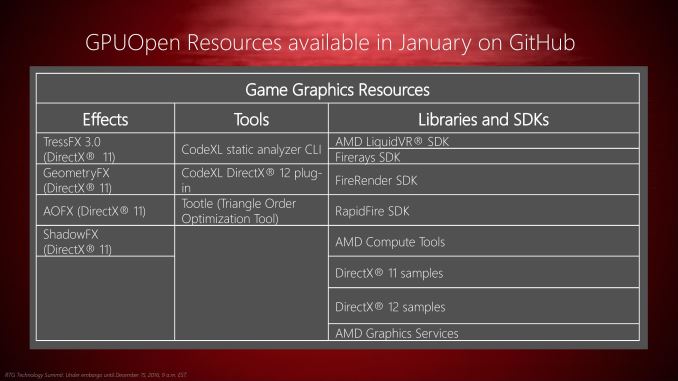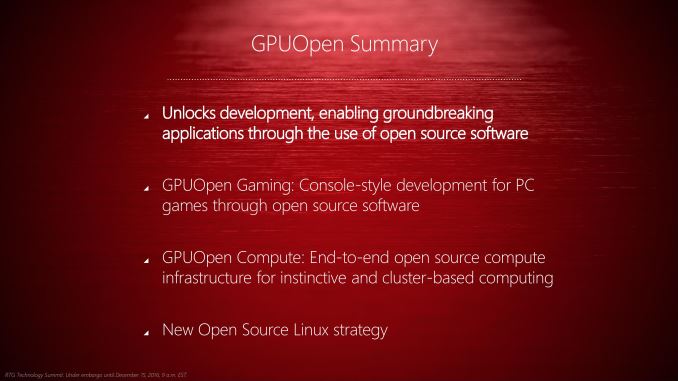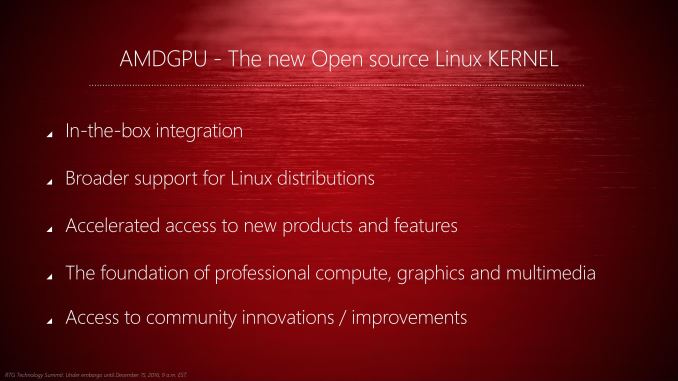AMD's Radeon Technologies Group (RTG) has announced an initiative called GPUOpen. Following up the information released last week concerning hardware plans, such as FreeSync over HDMI, we now are free to publish information concerning a software initiative where AMD will share the full source code to effects like TressFX, LiquidVR and ShadowFX plus tools like the CodeXL static analyser and libraries like LiquidVR. These GPUOpen resources will give developers unprecedented access to AMD GPUs and go live in January via GitHub. Another important announcement from AMD concerns the development of the AMDGPU unified Linux driver.

GPUOpen
AMD sees an 'industry problem' with divided console and PC development and so called 'black box' solutions, which probably is code-speak for Nvidia GameWorks. With AMD hardware at the core of the big two console systems and optimised for those platforms it should mean that moving games to PCs and smoothly making the most of PC-based AMD GPU features would result. AMD wants to provide open access to its GPU, many of its graphics API/SDK tools and follow industry standards to reduce friction in development across consoles and PCs.

As AnandTech notes, "everything at the GPUOpen portal will be open source and licensed under the highly permissive MIT license". Under this license developers can utilise AMD's code from its tools and libraries in any open and closed source projects they like. This contrasts to Nvidia's closed source libraries and limited sharing.
AMDGPU Linux Driver
AMDGPU was first seen back in April. A few months later we don't have a lot more information but we know that AMD wants to make this a unified driver for consumers and professionals. The new RTG produced driver will be made available as both a fully open source and a mixed open/closed source driver to the distros that require it. Both drivers will have a core AMDGPU source but the proprietary one will include "user mode driver components such as their (typically superior) OpenGL and multimedia runtimes," reports AnandTech. The single code base will allow AMD to focus its Linux development resources onto a narrower point.

AMDGPU is an important part of the Boltzmann Initiative, announced about a month ago. This is a software initiative aimed at High Performance computing (HPC) and provides provides a Heterogeneous Compute Compiler (HCC) using C++, a headless Linux driver and HSA runtime, and the Heterogeneous-compute Interface for Portability (HIP) to port CUDA apps to C++. With AMDGPU's open nature HPC users and developers will have greater access to the code behind the driver than offered by rivals such as Nvidia.
We shall have to see what tangible benefits result from RTG's latest open software initiatives. Will the open source code access improve the adoption of and boost the benefits of AMD's previously proprietary tech?













